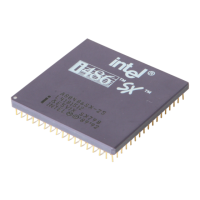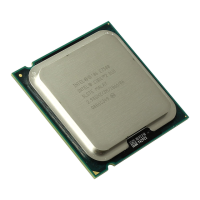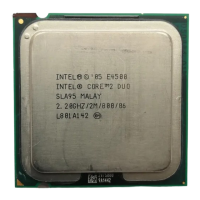EMBEDDED Intel486™ PROCESSOR HARDWARE REFERENCE MANUAL
10-34
• The worst case junction temperature (T
j
) is lower when calculated with case temperature for
two reasons. First, the junction-to-case thermal coefficient (θ
jc
) is lower than the junction-
to-ambient thermal coefficient (θ
ja
). Therefore, the calculated junction temperature varies
less with power dissipation (P
d
). Second, the junction-to-case coefficient (θ
jc
) is not
affected by the airflow in the system, whereas the junction-to-ambient coefficient (θ
ja
) does
vary.
Given the case temperature specification, a designer can either set the ambient temperature or use
fans to control the case temperature. Finned heatsinks or conductive cooling may also be used in
an environment which prohibits the use of fans.
A designer has considerable freedom in designing the heatsink and faces only practical and eco-
nomic limits. Multiple parallel devices may be helpful in reducing θ
sa
because if the heat input
to the heat sink is dispersed rather than concentrated, the effective thermal impedance is lower.
To approximate the case temperature for varying environments, the two equations discussed ear-
lier should be combined by making the junction temperature the same for both, resulting in the
following equation:
T
a
= T
c
– [(θ
ja
θ
jc
) P
d
]
Refer to the Intel486 processor datasheets to determine the values of θ
ja
(per the system’s airflow
requirement) and the ambient temperature that will yield the desired case temperature. The proper
calculations are important in achieving an efficient and reliable Intel486 processor system.
One packaging option for the Intel486 processors is a 168-pin ceramic PGA. The recommended
heatsinks for the device are offered in the pin fin design that utilizes air cooling. T
a
is greatly im-
proved by adding a heat sink. The heat sink is mounted on the PGA package with a frame and
spring. A typical heat sink is shown in Figure 10-27. The dimensions are shown in Figure 10-28.

